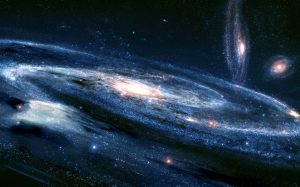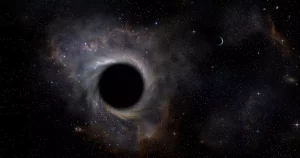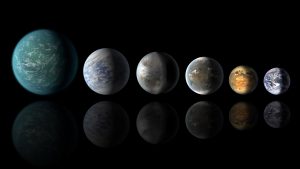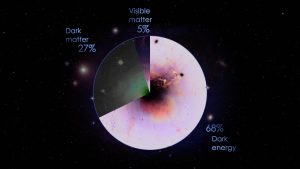Introduction The universe is a vast and mysterious place filled with galaxies, stars, planets, and cosmic wonders. From the tiniest particles to the largest structures, the universe holds secrets that scientists continue to uncover. It is estimated to be 13.8 billion years old and contains more than two trillion galaxies, each with billions of stars.
Introduction
The universe is a vast and mysterious place filled with galaxies, stars, planets, and cosmic wonders. From the tiniest particles to the largest structures, the universe holds secrets that scientists continue to uncover. It is estimated to be 13.8 billion years old and contains more than two trillion galaxies, each with billions of stars.
Understanding the universe not only expands our knowledge but also deepens our appreciation for existence. Whether you are fascinated by black holes, the speed of light, or exoplanets, exploring space is a thrilling journey. This guide provides an introduction to the Wonders of the Universe, helping beginners grasp its beauty and complexity.
What is the Universe?
The universe is everything—space, time, matter, and energy. It includes galaxies, stars, planets, asteroids, comets, and black holes, as well as dark matter and dark energy, which remain some of the biggest mysteries in astrophysics.
Scientists believe the universe began with the Big Bang, a massive explosion that created space and time about 13.8 billion years ago. Since then, it has been expanding, with galaxies moving away from each other. This expansion is supported by redshift observations made by astronomers like Edwin Hubble.
How Big is the Universe?
The observable universe stretches about 93 billion light-years across, meaning the farthest objects we can see are that many light-years away. However, the actual universe may be even larger—potentially infinite.
- Galaxies are grouped into clusters and superclusters, forming a cosmic web structure.
- The Milky Way, our home galaxy, spans about 100,000 light-years and contains over 200 billion stars.
- The nearest galaxy, Andromeda, is 2.5 million light-years away and is moving toward the Milky Way.
Galaxies: The Building Blocks of the Universe

Image by: Yandex.com
A galaxy is a vast collection of stars, planets, gas, dust, and dark matter held together by gravity. Galaxies come in different shapes and sizes, with the most common types being:
- Spiral Galaxies – These have arms that swirl outward from a dense center. The Milky Way is a spiral galaxy.
- Elliptical Galaxies – Shaped like elongated spheres, they contain older stars and little gas for new star formation.
- Irregular Galaxies – These have no distinct shape and often form due to collisions between galaxies.
Astronomers estimate that there are at least two trillion galaxies in the universe.
Stars: The Shining Lights of the Cosmos

Image by: Yandex.com
Stars are giant spheres of hot gas primarily composed of hydrogen and helium. They generate energy through nuclear fusion, a process that powers them for millions or even billions of years.
- Red Dwarfs – The most common stars, smaller and cooler than the Sun.
- Blue Giants – Hot, massive stars that burn fuel quickly and have shorter lifespans.
- White Dwarfs – The remains of medium-sized stars after they run out of fuel.
Our Sun is a yellow dwarf star that has been shining for 4.6 billion years and is expected to last another 5 billion years before becoming a red giant.
Black Holes: The Cosmic Mysteries

Image by: Yandex.com
A black hole is a region in space where gravity is so strong that not even light can escape. Black holes form when massive stars collapse under their own gravity.
- The event horizon is the point beyond which nothing can return.
- The largest black holes, called supermassive black holes, exist at the center of galaxies.
- The Milky Way’s supermassive black hole, Sagittarius A*, has a mass four million times that of the Sun.
In 2019, scientists captured the first-ever image of a black hole using the Event Horizon Telescope, confirming Einstein’s theories about gravity.
Exoplanets: Worlds Beyond Our Solar System

Image by: Yandex.com
Exoplanets are planets that orbit stars outside our solar system. Since the discovery of the first exoplanet in 1992, astronomers have found over 5,000 exoplanets.
- Some exoplanets are Earth-like and may have conditions suitable for life.
- The TRAPPIST-1 system contains seven rocky planets, three of which could have liquid water.
- Scientists use the transit method to detect exoplanets by measuring how they block starlight when passing in front of their stars.
The search for habitable worlds continues, with space telescopes like James Webb helping us explore their atmospheres.
Dark Matter and Dark Energy: The Hidden Universe
Scientists believe that only 5% of the universe consists of visible matter, while the rest is made up of dark matter and dark energy.
- Dark Matter – An invisible substance that makes up 27% of the universe and affects galaxy rotation.
- Dark Energy – A mysterious force causing the accelerated expansion of the universe, making up 68% of cosmic energy.
Though their exact nature remains unknown, these components play a crucial role in cosmic evolution.
Tips for Stargazing and Exploring the Universe

Image by: Yandex.com
Observing the night sky can be a breathtaking experience. Here are some simple ways to explore the wonders of space from Earth:
- Find a dark sky location – Light pollution reduces visibility, so stargazing in rural areas is ideal.
- Use a telescope or binoculars – Even a simple telescope can reveal planets, moons, and star clusters.
- Learn constellations – Recognizing Orion, Ursa Major, and the Pleiades is a great start.
- Follow celestial events – Look out for meteor showers, eclipses, and planetary alignments.
Space apps like Stellarium and SkyView help beginners locate stars and planets in real time.
Table: Key Features of the Universe
| Feature | Description |
|---|---|
| Age | 13.8 billion years |
| Size | At least 93 billion light-years across |
| Number of Galaxies | Estimated 2 trillion |
| Largest Galaxy | IC 1101 (5.5 million light-years wide) |
| Number of Stars in the Milky Way | 200-400 billion |
| Nearest Star to Earth | Proxima Centauri (4.24 light-years away) |
| Largest Black Hole | TON 618 (66 billion times the mass of the Sun) |
| Closest Exoplanet in a Habitable Zone | Proxima b (4.24 light-years away) |
Final Thoughts
The universe is a vast, beautiful, and mysterious place that continues to captivate scientists and Space Enthusiasts alike. From galaxies and black holes to exoplanets and cosmic mysteries, there is so much to discover.
Key Takeaways:
- The universe is constantly expanding, and new discoveries are made every day.
- Stars, galaxies, and black holes reveal insights into the past and future of space.
- Exploring the cosmos can be as simple as looking up at the night sky.
















